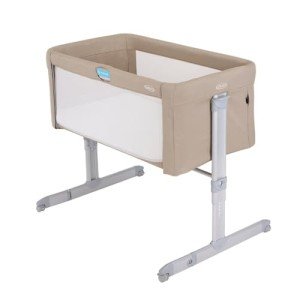The Benefits of Using a Bedside Cot for Nursing: A Comprehensive Guide
In current years, the principle of co-sleeping, particularly making use of bedside cots, has gained much attention among new parents and caretakers. A bedside cot is a kind of baby bed that is created to securely connect to the side of an adult bed, supplying a safe sleeping environment for infants while promoting ease of access for breastfeeding mothers. This short article will check out the numerous advantages of bedside cots for nursing, various types offered, considerations for selecting one, and often asked concerns.
The Advantages of Bedside Cots for Nursing
1. Enhanced Accessibility
Among the most considerable advantages of a bedside cot is the ease of access it offers. Nursing mothers can just reach over to get their baby without the requirement to stand up or move away from bed. This convenience permits:
- Quick night feedings
- Increased convenience for the mom
- Reduced risk of disruptions to both mom and baby during nighttime care
2. Promotes Bonding
Nursing is more than simply a way of nourishment; it is likewise a chance for mothers to bond with their infants. A bedside cot facilitates this connection by permitting moms to keep close distance to their babies during sleep. This nearness can result in:
- Enhanced emotional connection
- Increased milk production due to frequent nursing
- A sense of security for the infant
3. Encourages Extended Breastfeeding
The benefit of having a bedside cot motivates longer breastfeeding durations. Mothers are most likely to follow their baby's feeding cues and respond promptly when they can quickly access their child. The benefits of prolonged breastfeeding consist of:
- Improved dietary consumption for the baby
- Boosted developmental advantages
- Enhanced immunities through breast milk
4. Supports Safe Sleep Practices
Bedside cots are developed with safety in mind, allowing parents to maintain close supervision over their sleeping infant. By adhering to safe sleep suggestions-- such as placing the baby on their back to sleep and ensuring a company mattress-- parents can develop a much safer environment. Functions that contribute to safety may include:
- Breathable sides to prevent suffocation
- Sturdy, non-toxic materials
- Adjustable heights to match the adult bed
5. Versatile Use
A bedside cot can act as both a crib and a co-sleeping plan. Numerous models are adjustable in height or can be totally removed for use as a standalone crib when the child gets older. This versatility provides long-lasting use and worth.
Kinds Of Bedside Cots
Bedside cots are available in numerous designs and designs. Below are some typical types:
| Type | Description |
|---|---|
| Co-Sleeping Cribs | Full-sized cribs that can be firmly connected to the side of the parents' bed. |
| Bassinet-style Cots | Smaller, portable cots that fit beside the bed and are light-weight for easy transport. |
| Convertible Baby Beds | Cots that transform into different types of beds as the kid grows, often including young child and youth bed choices. |
| Foldable Playards | These can be utilized as both a sleep location and a backyard, quickly stored when not in use. |
Factors to consider When Choosing a Bedside Cot
When choosing a bedside cot, parents must think about numerous essential elements:
Safety Features
- Try to find mesh sides for ventilation.
- Make sure that the cot fulfills security standards and guidelines.
Alleviate of Use
- Look for adjustable height settings to align with your bed.
- Think about how easily the cot can be moved if needed.
Size and Space
- Make certain there is enough space in the bedroom for the cot.
- Choose a crib that fits easily without taking excessive room.
Portability
- If travel is regular, consider a light-weight design that can be quickly folded and transferred.
Toughness and Material
- Select high-quality materials that use durability and are easy to tidy.
Frequently Asked Questions
1. Are bedside cots safe for sleeping?
Yes, when used correctly and following security guidelines, bedside cots are generally safe for infants to sleep in. Constantly make sure that the cot is securely connected to the adult bed which there are no gaps.
2. Can I use a bedside cot for a newborn?
The majority of bedside cots are developed for newborns and can accommodate them securely. Constantly inspect the maker's recommendations for weight limits and age suitability.
3. How can I ensure my baby's safety while utilizing a bedside cot?
To guarantee safety, always put your baby on their back to sleep and routinely check that the cot is safely connected to your bed. Preserve a clutter-free sleeping environment.
4. When should I shift my baby from a bedside cot to a crib?
Habitually, parents shift their kid to a crib when they are around 4 to 6 months old or when they start to roll over often. Nevertheless, the specific timing depends upon the baby's development.
5. Can I use a bedside cot for multiple babies?
Bedside cots are normally designed for single infants. If parents have twins or multiples, it's recommended to use different sleeping arrangements to make sure safety.
Bedside cots offer lots of benefits for nursing mothers, consisting of ease of access, safety, and promoting a strong bond between mom and kid. By selecting the right kind of bedside cot and thinking about safety functions, parents can produce a nurturing environment for their infants. As the pattern of co-sleeping continues to increase, offering a safe and comforting setup is vital for the wellness of both baby and caregiver. With Cots 4 Tots and resources, parents can browse this new chapter in their lives much better ready than ever.

